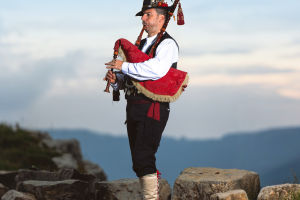P'ansori, a celebrated form of Korean musical storytelling, is a unique performance that has captivated audiences worldwide.
Recognized by UNESCO as an Intangible Cultural Heritage, it combines singing, acting, and narration in a dramatic way that has entertained generations.
For our Lykkers, this art form represents not only the essence of Korean culture but also the power of storytelling through vocal expressions and rhythmic movements.
The Origins and Development of P'ansori
Birth of the Art
P'ansori began in the 18th century in the Chŏlla region of Korea. It was a form of entertainment and education for the common people, combining elements of music, literature, and theater.
Initially performed by men, it gained popularity as a means of conveying folk tales through emotive vocal performance and rhythmic drumming.
Growth in Popularity
By the 19th century, p'ansori had transcended its origins as a folk performance and began to gain admiration from the Korean elite. Although its prominence waned in the mid-20th century, today it is still celebrated and supported by South Korean society, with performers earning recognition as "Living National Treasures" for their dedication to preserving this ancient art.
Famous Stories and Themes
The Stories of P'ansori
P'ansori performances center around five main stories that have been passed down through generations. Among these, two stories, "Ch'unhyangga" and "Simch'ŏngga", are the most beloved and frequently performed.
Simch'ŏngga: The Sacrifice of Simch'ŏng
Another well-known story is "Simch'ŏngga", which revolves around the selfless Simch'ŏng, who sacrifices herself to save her blind father. Her journey leads her to the sea, where she becomes the object of a sea deity's affection. In a beautiful twist, the story concludes with her father regaining his sight, highlighting the themes of love, sacrifice, and the power of family.
Musical Structure and Performance Techniques
The Role of the Performer
P'ansori is performed by a "kwangdae" (singer) and a "kosu" (drummer). The "kwangdae" performs both the vocal and acting roles, portraying both male and female characters.
The performance alternates between singing (ch'ang) and speaking (aniri), which helps in conveying the story with greater depth and emotional expression.
Rhythm and Vocal Techniques
Central to the art of p'ansori are its rhythmic structures and vocal techniques. There are five primary rhythms used in p'ansori that reflect the emotional tone of the story: "cho" (tone), "changdan" (rhythmic structure), "puch'imsae" (word and melody combination), and others. Each rhythm has a distinct emotional effect, helping to intensify the audience's connection to the narrative.
Modern-Day P'ansori
Preservation and Recognition
Today, p'ansori is still performed across South Korea, often featured in festivals and cultural events. The South Korean government actively supports the preservation of this art form, and many artists continue to be recognized as National Living Treasures.
P'ansori's deep cultural significance ensures that it remains an important part of the nation's artistic heritage.
Global Influence
While p'ansori remains deeply rooted in Korean tradition, its influence has extended globally. Performances and adaptations have introduced this expressive art to international audiences, further enhancing its cultural importance.
Conclusion
P'ansori is a testament to the power of storytelling, where music, emotion, and tradition merge to create a captivating performance. From its humble beginnings as a form of folk entertainment to its recognition as a UNESCO World Heritage, this art form continues to thrive and evolve.
For Lykkers, exploring the world of p'ansori is not just about appreciating Korean culture but understanding the universal appeal of storytelling through music.


